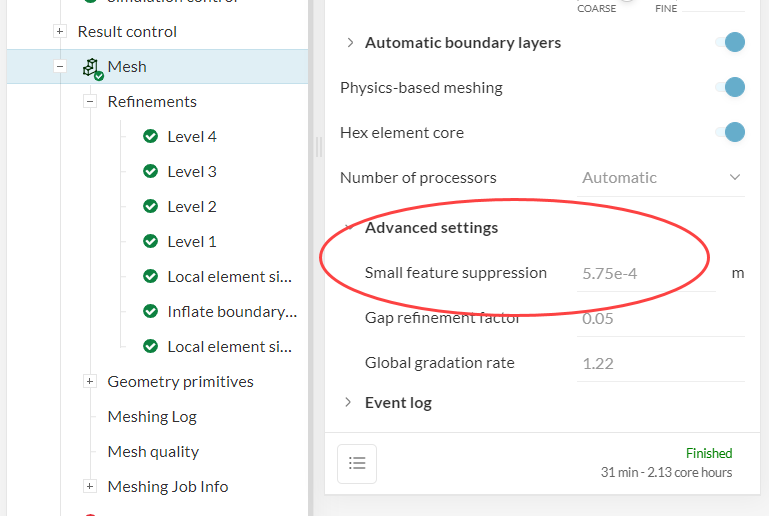Hi, I am doing a CFD simulation of a F1 rear wing design I’ve quickly knocked up in NX. With this kind of simulation I’ve read it is very important to make sure your mesh accurately captures the boundary layer, especially when dealing with large pressure gradients and wanting to check for/where flow seperation occurs.
Since I’m using SST turbulence model, I know I want to be aiming for y+ value of around 1. And from other reading, ideally I would want at least 25-30 prism layers, however, max SimScale will let me use is 20. In order to get a good first mesh guess, I’m following this video in order to calculate an appropriate Growth Ratio and rough intial total prism layer thickness estimate to completely capture the boundary layer.
Now, after using the CFD Online y+ calculator, and doing some rough code in MATLAB, I intend for my initial mesh to have the following parameters for the two aerofoil surfaces (main plane and flap):
Number of Prism layers - 20
Inflation BL Growth Ratio - 1.308
First Cell height - 1e^-5 m (based on Y+ calculator giving centroid height of 5e^-6m)
d99 - 0.007 m (initial guess of boundary layer thickness for at least the laminar part that I want the total prism thickness to cover)
However, when I’ve created the inflate boundary layer refinement and assigned it to the main plane and flap, the automatic mesher only lets me choose between specifying growth ratio OR first cell height, I can’t choose both, and instead have to choose a ratio of the total thickness relative to the local mesh size.
To make sure the mesh’s prism layer total thickness is close to or equal to my calculated d99 value, do I need to take a rough guess of of local cell thickness from my initial mesh, then divide that by my d99 value to then get the required relative thickness ratio I need to make my prism total thickness close to the d99 value based on the first cell height I specify?
Obviously I know that these are all just rough strong first guesses, then with this first mesh that hopefully does an okay job at capturing the boundary layer, I can run an initial simulation, and from there I can better measure actual wall shear stress velocities on the aerofoil based on the pressure gradients the aerofoil profiles are giving me, and then chuck those values into MATLAB to reiterate and hopefully get a better boundary thickness guess to then recalculate prism layer thickness and growth ratios again.
Here is the project, the mesh I’m looking to create from this info is ‘20 PL with first GR iteration’.
Edit: So I just tried to generate a mesh with 20 prism layers on the aerofoils, with the default ‘Overall relative thickness’ of 0.4 and setting the first layer height to 1e^-5, and for some reason the completed mesh is just showing two prism layers, and zoomed in a lot to make sure it wasn’t just the first 18 layers being absolutely tiny compared to the last outer 2. Going to try again this time specifying the growth ratio of 1.308 instead.
![[CFD] Inflation Layers / Prism Layers in CFD](https://www.simscale.com/forum/uploads/default/original/3X/3/a/3add31c10619369aad0cebd7e04e30077bad58f4.jpeg)

